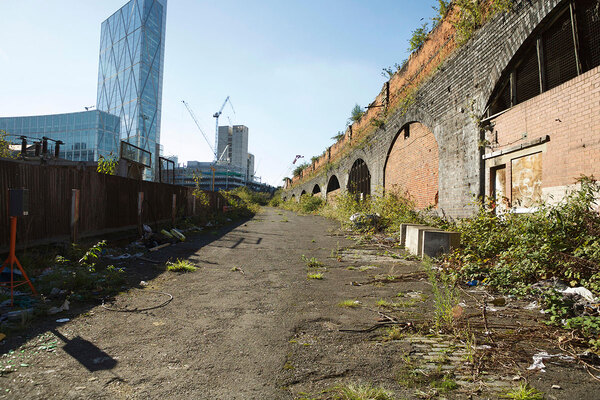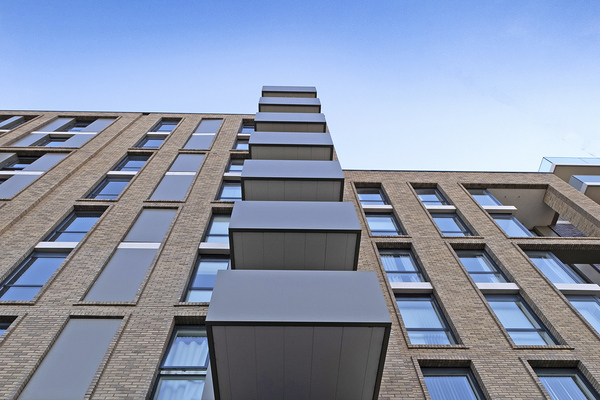You are viewing 1 of your 1 free articles

A change to planning definitions would boost Rent to Buy
Rent to Buy allows aspiring homeowners to save for a deposit while putting down roots, but planning policy needs to encourage investment in the tenure, says Steve Collins of Rentplus
The challenge aspirant homeowners face in accessing the housing ladder is perhaps the most significant it has been in decades.
The latest official figures show that the average house price is 7.6 times the average annual salary, more than double the figure for 20 years ago.
This is compounded by the lowest levels of peacetime construction in the past 10 years since the early 1920s. Demand is far outstripping supply.
“The current range of low-cost homeownership tenures are only available to those who have a deposit.”
It’s no wonder, therefore, that more than half of 25 to 34-year-olds find themselves stuck in private rented accommodation, spending up to half their income on rent and struggling to save for a deposit to make the transition to homeownership.
The current range of low-cost homeownership tenures – such as shared ownership and Help to Buy – are only available to those who have a deposit.
The fact remains that there is a significant gap in the market for those without the ‘Bank of Mum and Dad’ or their own deposit.
Politicians from across the political spectrum acknowledge the need to address the housing crisis, with some, such as communities secretary Sajid Javid and Chris Chope MP, proposing solutions to help aspirant homeowners overcome the deposit trap by rolling out innovative tenures like affordable Rent to Buy at scale.
Rent to Buy has been trialled before, but previous models were typically developed in response to the financial crash in 2008 when shared ownership units were converted in order to address low sales. Current affordable Rent to Buy models are a mainstream tenure in their own right.
These new Rent to Buy models are specifically designed to allow people to securely rent the home they plan to purchase at an affordable rent with an assured shorthold tenancy – giving them time and an opportunity to put money aside for a deposit while establishing roots and investing in their local community.
“The fact that it is not readily being deployed shows that there must be a blockage in the system.”
Some models offer people a discount price on their home when they come to buy and others gift residents a portion of their deposit.
Both ultimately provide renters with a realistic and affordable route to homeownership.
Scaling up the delivery of affordable Rent to Buy doesn’t require public funds or subsidy.
One of the government’s Housing White Paper objectives is to encourage private investment into the delivery of affordable housing as a response to the housing crisis. Part of this investment should be destined for affordable Rent to Buy.
Conversations with institutional investors from across the city, including pension funds and banks, indicate that there is up to £40bn of private funding available for new tenure types, such as affordable Rent to Buy.
The fact that it is not readily being deployed shows that there must be a blockage in the system. The chancellor is looking for innovative cost-neutral ways to scale up the delivery of homes and removing this barrier could be one of them.
To unlock this funding the National Planning Policy Framework (NPPF) needs to be revised to broaden the definition of affordable housing as widely as possible and include affordable Rent to Buy. Mr Chope has championed this proposal and in October proposed a new definition of affordable Rent to Buy in the House of Commons as part of his Ten Minute Rule Affordable Homeownership Bill.
“The National Planning Policy Framework needs to be revised to broaden the definition of affordable housing.”
Official recognition in the NPPF would overcome local authorities’ reticence toward delivering innovative new tenures and provide the confidence needed for them to accept these schemes as part of Section 106 affordable housing planning requirements on new developments.
Delivery of privately funded affordable Rent to Buy is complementary to the government’s other affordable housing programmes and it can have a powerful impact in supporting local authorities to meet their housing obligations by reducing waiting lists and enabling people living in existing social housing to move into affordable Rent to Buy homes, thus freeing up homes for those most in need.
The evidence from one such model shows that up to 60% of tenants have been housed from housing waiting lists, and of these a third were previously living in social housing.
Turning on the tap of private investment and facilitating investment into accelerated delivery of affordable Rent to Buy would assist in fixing the broken housing market and see many more hard-working families fulfil their dreams of homeownership.
Steve Collins, chief executive, Rentplus











